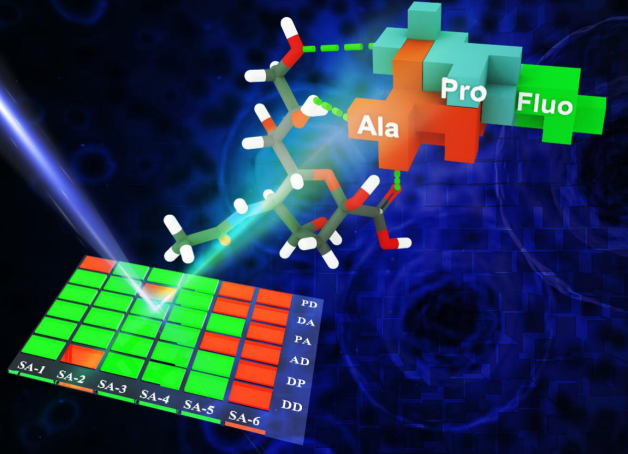Rapid and high-efficiency discrimination of different sialic acid species using dipeptide-based fluorescent sensors
Qi Lu, Mimi Zhan, Lijing Deng, Guangyan Qing* and Taolei Sun*
Analyst, 2017, 142, 3564-3568
DOI: 10.1039/c7an00762k

A series of dipeptide-based fluorescent sensors were developed that exhibit sensitive and distinct responses to six typical sialic acid (SA) species despite the interference of 300-fold D-glucose or other saccharides, thus contributing to a novel fluorescence sensing matrix allowing rapid and high-efficiency discrimination of different SA species. This is the first study to demonstrate that synthetic dipeptides could serve as simple but highly efficient recognition platforms for SAs. Inspired by the core binding domain [i.e., Asp-Pro-Ala-Asp (DPAD)] in a lactose-specific lectin—peanut agglutinin (PNA), six types of dipeptide combinations (DP, DA, DD, PA, PD, and AD) were designed and then labelled with fluorescein groups, generating a series of dipeptide-based fluorescent sensors. Through remarkable and distinct fluorescence quenching, these sensors exhibited unique discrimination capacity towards six representative SA species, despite the interference of 300-fold glucose. Notably, the combination of these six dipeptide sensors resulted in an efficient fluorescence detection matrix for these SAs, illustrating the significant advantage of dipeptide platforms in SA discrimination.